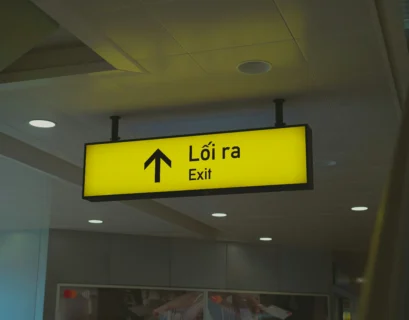Visiting Spain and want affordable data without the roaming shock? The cheapest, easiest choices right now are travel eSIMs you activate in minutes or low-cost prepaid SIMs from Spanish carriers you can buy on arrival. Below you’ll find the best-value options, what they cost, where to get them, and how to pick the right one for your trip length and data needs. Jump to Best eSIMs, Prepaid SIMs, or Setup.
Prices can change but it’s common to pay $1–$5 for a light-use eSIM or €10–€15 for a hefty, 28–30 day local plan with tens of gigabytes. Reports from comparison sites like Cybernews, Travel Tom Tom, Too Many Adapters, and Remotely Spanish back up the prices and plans highlighted below.

Quick comparison: cheapest ways to get data in Spain
Here are the standout low-cost options for short trips and month-long stays.
| Option | Starter price | Data & validity | Key perks | Ideal for |
|---|---|---|---|---|
| Jetpac (eSIM) | $1 USD | 1 GB / 4 days | Ultra-cheap trial; instant setup | Weekend break, light users |
| Saily (eSIM) | $3.79 USD | 1 GB / 7 days | Good short-trip value; easy purchase | 3–7 day trips |
| Airalo (eSIM) | $0–$4.50 USD+ | 1 GB / 1 day free option; paid plans vary | “Try before you buy”; flexible tiers | Arrival day connectivity |
| Vodafone Prepago M (SIM) | €15 | 100 GB / 28 days | Unlimited domestic calls + 800 min intl | Heavy users, 2–4 weeks |
| Orange Go Walk (SIM) | €10 | 50 GB / 30 days | Unlimited domestic calls | Value pick, 2–4 weeks |
| Movistar Prepaid (SIM) | €10 | 40 GB / 28–30 days | Strong nationwide coverage | Balanced data + coverage |
Data points and plan names as reported by major travel and tech outlets covering Spain mobile deals in 2025. See Best eSIMs or jump to local prepaid SIMs.
Best eSIMs for Spain (cheap and convenient)
eSIMs are the fastest way to get online: buy, scan a QR code, and you’re connected on landing. They’re great for short trips or as a “bridge” until you buy a local SIM.
- Jetpac: Often the lowest entry price, e.g., $1 for 1 GB valid 4 days reported by travel deal roundups. Ideal for quick city breaks or testing coverage.
- Saily: Good value for short stays, with plans starting around $3.79 for 1 GB for 7 days per recent comparisons.
- Airalo: Flexible marketplace; widely cited for a 1 GB for 1 day free trial and paid plans from around $4.50. Helpful if you want to compare multiple tiers.
Notes:
- Coverage typically rides on Spain’s big networks (Movistar, Orange, Vodafone). Expect 4G/5G in cities and towns; rural speeds vary.
- Requires an eSIM-compatible, unlocked phone. Dual-SIM lets you keep your number active for calls/2FA while using local data.
- Top-ups are app-based; check if your plan allows hotspot tethering and whether 5G is included.
When eSIMs make the most sense
- Trips under 7–10 days or light data use
- Late-night arrivals when stores are closed
- Needing data immediately for maps, rideshares, or check-in codes
Prepaid SIM cards from Spanish carriers
If you’ll use lots of data or stay a few weeks, local prepaid SIMs usually deliver the most gigabytes per euro.
- Vodafone “Prepago M” (€15): ~100 GB for 28 days, unlimited domestic calls, plus 800 international minutes noted in recent Spain travel guides.
- Orange “Go Walk” (€10): ~50 GB for a month with unlimited domestic calls; a solid budget pick reported in current roundups.
- Movistar Prepaid (€10): ~40 GB; widely praised for coverage quality across Spain.
Expect easy top-ups in-app, at kiosks, or supermarkets. 5G is widespread in major cities; performance is strong on all three networks.
Where to buy a SIM in Spain
- Carrier stores: Vodafone, Orange, and Movistar shops in city centers and malls; usually the smoothest setup.
- Airports: Convenient but sometimes pricier or with tourist bundles.
- Convenience stores/kiosks: Look for branded packs; staff may help with activation.
- Online: Some carriers and resellers let you order for pickup or delivery.
What you’ll need
- Unlocked phone that supports Spain’s bands and 4G/5G.
- Passport or national ID for SIM registration (common requirement in Spain).
- Payment method (cash/card); keep the SIM tray tool or a paperclip handy.
Which should you choose?
- City weekend, light maps/messaging: Jetpac 1 GB/$1 (4 days) or Saily 1 GB/$3.79 (7 days).
- 1–2 weeks, moderate use: Airalo small bundle or Orange Go Walk (€10/50 GB) for headroom.
- 2–4 weeks, heavy streaming/hotspot: Vodafone Prepago M (€15/100 GB) = best € per GB.
- Coverage-first travelers (road trips, rural): Movistar prepaid (€10/40 GB) for network reach.
Ready to install or swap? See setup steps.
Setup: step-by-step
eSIM (before you fly)
- Check your phone supports eSIM and is unlocked.
- Buy a Spain eSIM plan in the provider’s app/site.
- Install via QR code; leave it inactive until landing.
- On arrival, turn on the eSIM line and data roaming for the eSIM.
- Set APN if prompted; test data and calls (if included).
Prepaid SIM (on arrival)
- Visit a carrier shop with your passport and phone.
- Choose a plan; ask staff to activate and test before you leave.
- Insert SIM, confirm data works, and ask how to top up.
- Save or screenshot your new number and plan details.
Coverage and performance
Spain has robust 4G and growing 5G in cities like Madrid, Barcelona, Valencia, Seville, Bilbao, and Málaga. Movistar, Orange, and Vodafone all offer broad coverage; rural and mountainous areas may drop to 4G or 3G. For consistent speeds on road trips, choosing a SIM that uses Movistar or Orange networks is a safe bet.
Money-saving tips
- Download offline maps and playlists on Wi‑Fi.
- Disable background data for nonessential apps.
- Use messaging apps and Wi‑Fi calling instead of international minutes.
- Hotspot sparingly; it burns data fast.
- If you land late, start with a cheap eSIM, then switch to a local SIM next morning.

FAQs
Can I keep my home number? Yes. Use dual-SIM: keep your home SIM for calls/2FA, run data on a Spain eSIM/SIM.
Do these plans include hotspot and 5G? Often yes, but check plan details; some low-cost eSIMs limit tethering or cap speeds.
Will my EU roaming work? If you have an EU SIM with fair-use roaming, you may be fine. Non‑EU travelers usually save more with a Spain eSIM or local prepaid.
Pricing and plan names are based on 2025 roundups from well-known travel/tech publications comparing Spain eSIMs and prepaid offers. Always confirm the latest details before purchase.
FAQs
What phone requirements and unlocking steps are needed for using an eSIM in Spain?
You need an eSIM-capable, carrier-unlocked phone that supports Spain’s LTE/5G bands (LTE 3/7/20/28; 5G n78 is common). Request an unlock from your carrier before travel; after approval, restart your phone and verify the unlock (on iPhone: Settings > General > About > Carrier Lock shows “No SIM restrictions,” or test with another SIM/eSIM). Ensure dual-SIM is enabled if you’ll keep your home number active.
How do I activate a purchased Spain eSIM when arriving at the airport?
Install the eSIM profile before you fly but leave it inactive. On arrival, enable the eSIM line, set it as the data line, turn on data roaming for that line, and allow automatic network selection; add the APN from your provider if prompted. If data doesn’t start, toggle Airplane Mode, reboot, or re-download the profile from the provider app.
Is it cheaper to buy a local prepaid SIM for month‑long travel?
Yes, for 28–30 days a local SIM usually wins on price per GB. Examples: Vodafone Prepago M offers ~100 GB for €15 and Orange Go Walk ~50 GB for €10, both far cheaper per GB than most travel eSIMs while adding domestic calling. eSIMs remain convenient for short stays or late arrivals.
Why won’t my eSIM connect or show data after installation in Spain?
Common fixes: make sure the eSIM is the active data line and data roaming is enabled; set the correct APN; and keep network selection on automatic. If issues persist, restart the phone, reset network settings, or manually choose Movistar/Orange/Vodafone. Also confirm your phone is unlocked and the plan is activated and within validity.
Which option gives the best euros per gigabyte for two‑week trips?
Local prepaid SIMs usually offer the best €/GB for 14 days: Vodafone Prepago M (~€0.15/GB) and Orange Go Walk (~€0.20/GB) beat most eSIM rates. Heavy users should pick Vodafone’s 100 GB for €15; light users can pair a cheap starter eSIM with Wi‑Fi. See prepaid SIMs and the comparison table.
Bottom line
For the cheapest, fastest setup, grab a Spain eSIM like Jetpac, Saily, or Airalo before you fly. If you need lots of data for a week or more, a local prepaid SIM from Vodafone (100 GB/€15), Orange (50 GB/€10), or Movistar (40 GB/€10) is hard to beat. Choose based on your trip length and data needs, and you’ll stay connected across Spain without overpaying.













